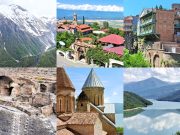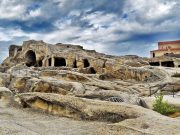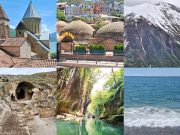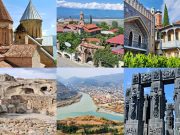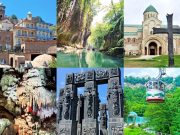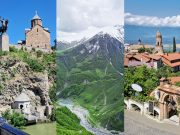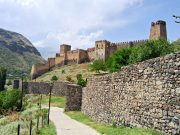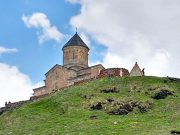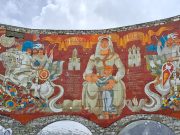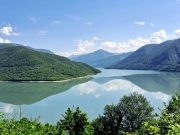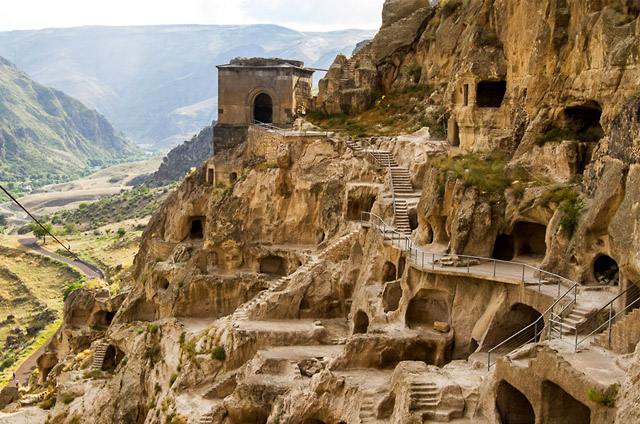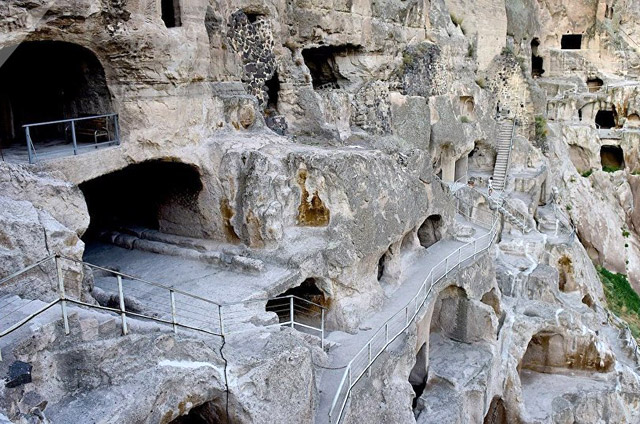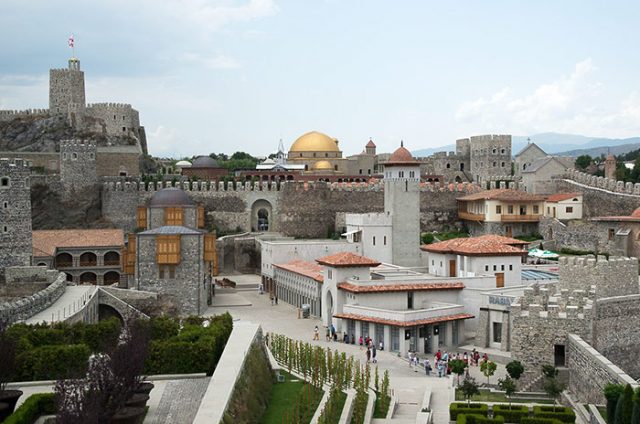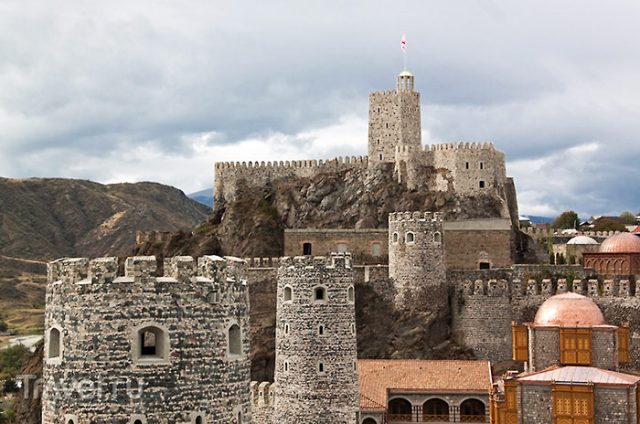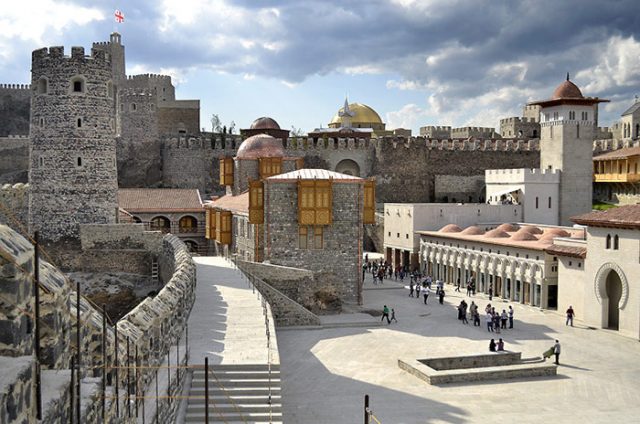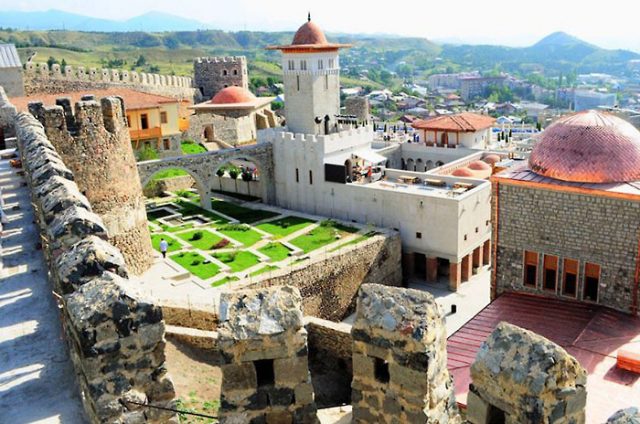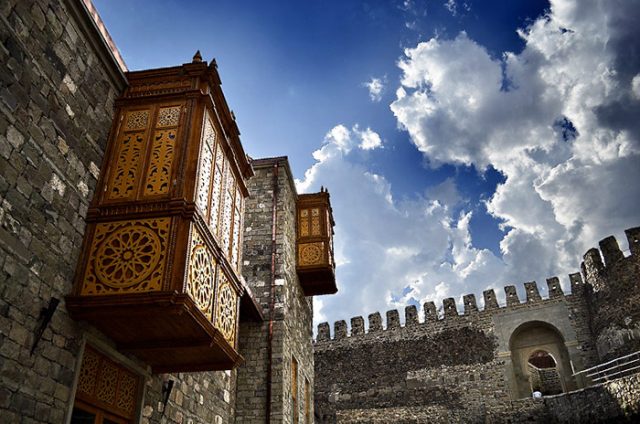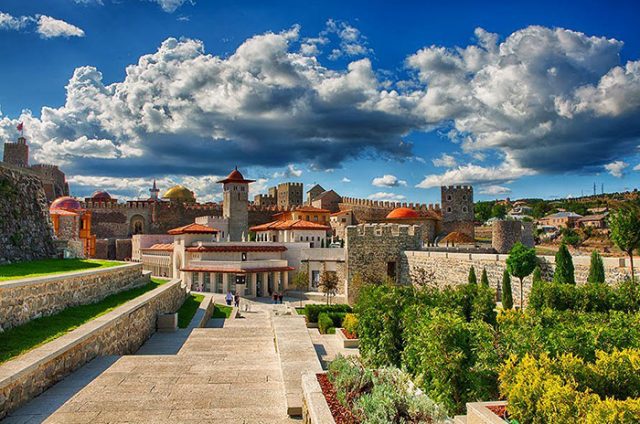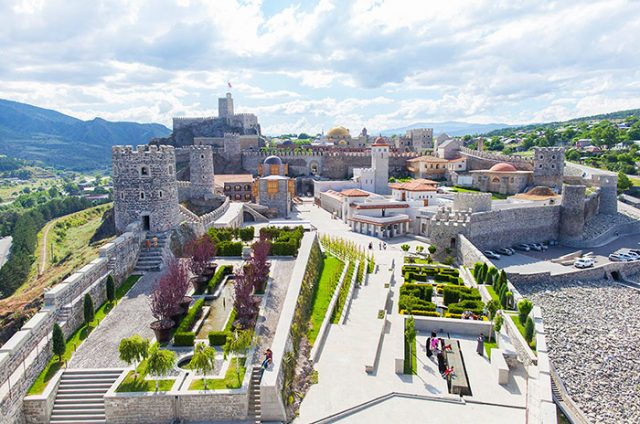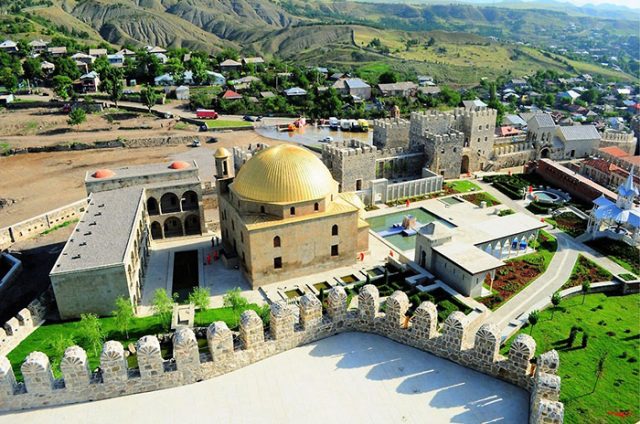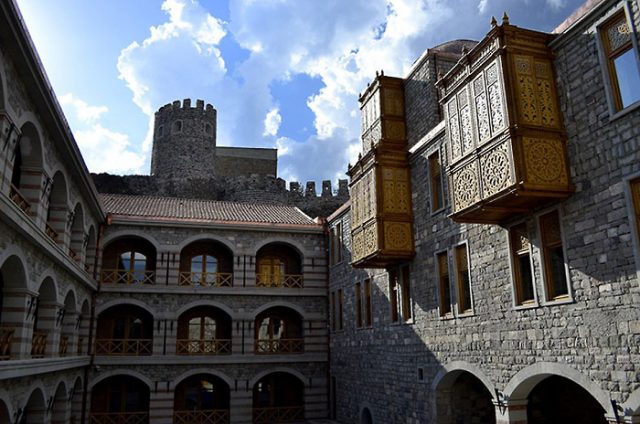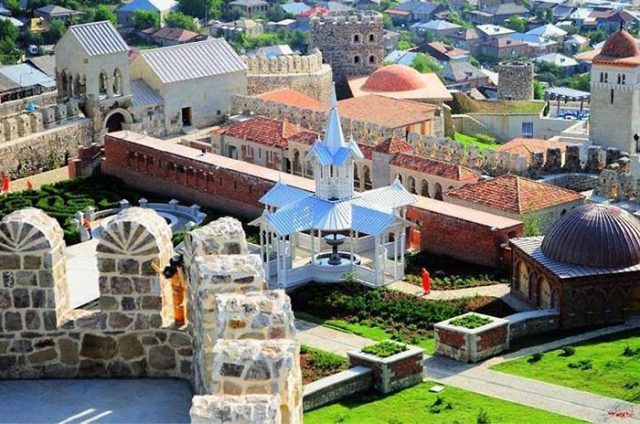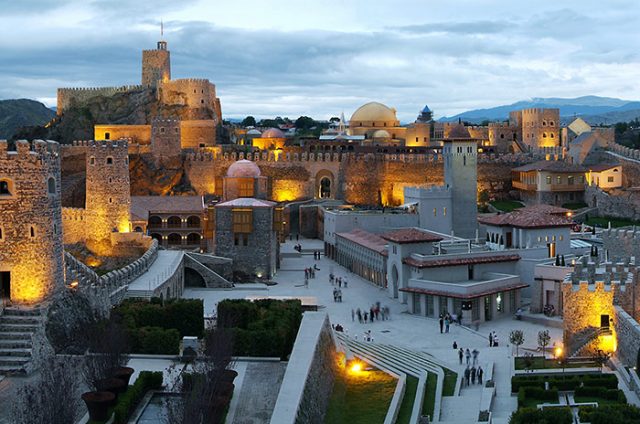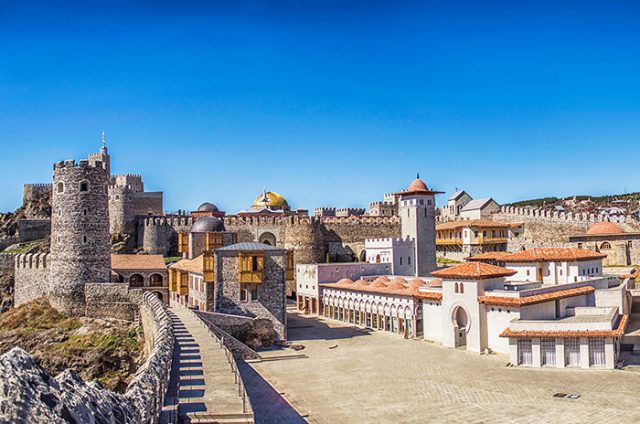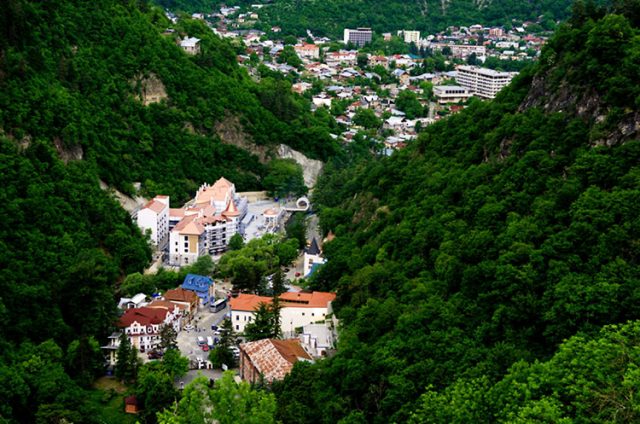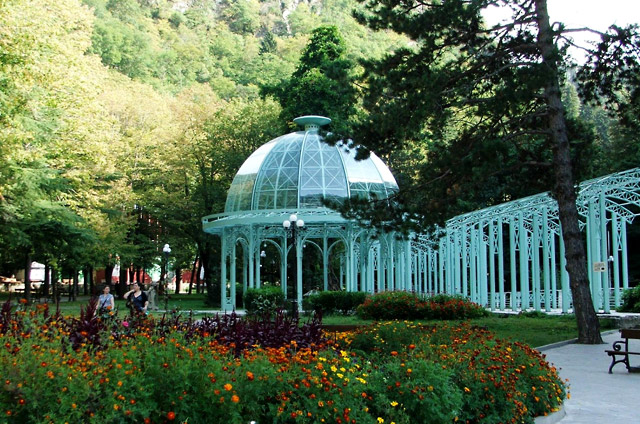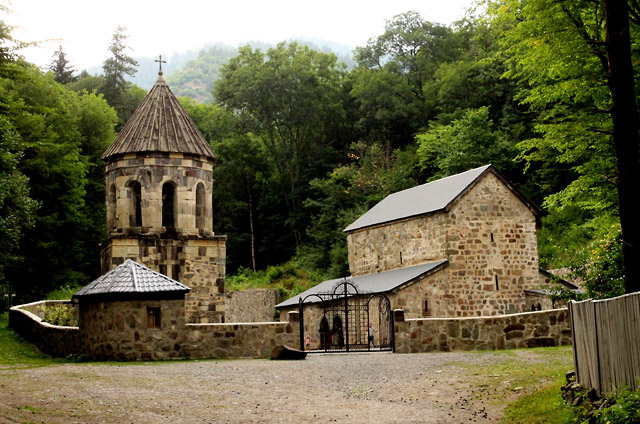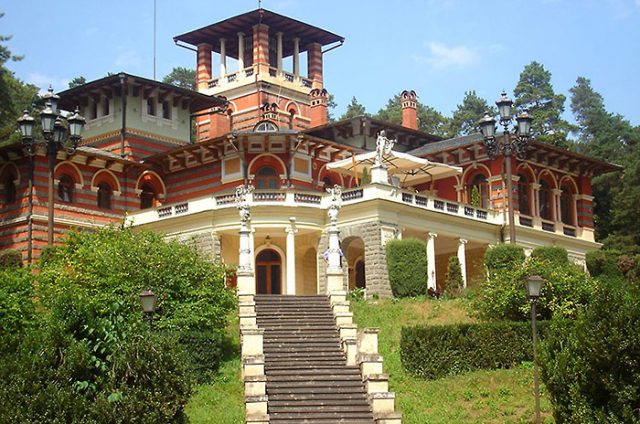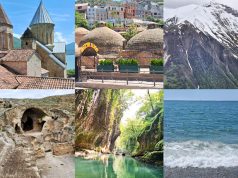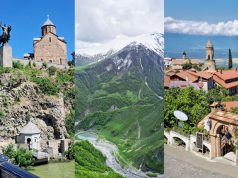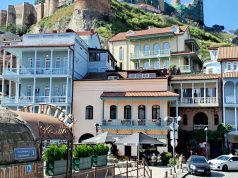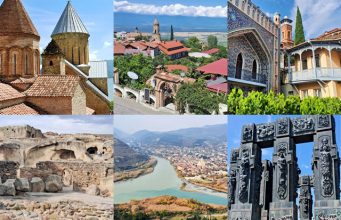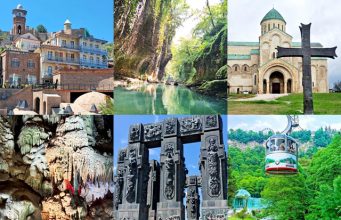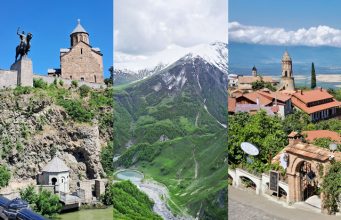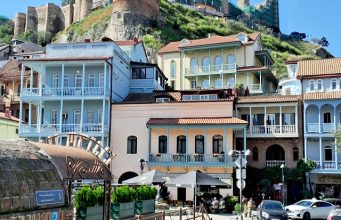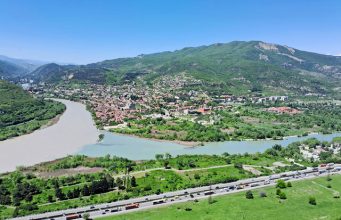Enjoy the beautiful nature of Georgia, try Georgian cuisine and wine – this is a 6 day tour of Georgia.
Day 1.
Meeting at Tbilisi International Airport and transfer to the hotel.
Sightseeing tour around the historical part of Tbilisi
Metekhi Plateau – a historical district of Tbilisi, located on a cliff above the Mtkvari (Kura) River.
The monument “Mother of Georgian” – which has become one of the symbols of Tbilisi. The statue symbolizes the Georgian national character: a female figure holds a cup of wine in her left hand to greet those who came as a friend, and in her right hand a sword for those who came as an enemy.

Narikala Fortress – the most famous and ancient monument of Tbilisi antiquity, since the fourth century is called the date of construction of the fortress. The original name of the fortress was Shuris Tsikhe (Enviable Fortress), and the modern name was given by the Mongols, having captured Tbilisi – “naryn kala” in Mongolian means “Little Fortress”.
Abanotubani (bath district) – a historical district in the center of Tbilisi, famous for its complex of baths standing on natural sulfur springs. Baths form a separate quarter of the city, which is a popular destination for many tourists.
Sioni Cathedral (VI-XII centuries) – historically the main temple of Tbilisi, built in the name of the Assumption of the Blessed Virgin Mary – one of the most famous monuments of the old city, named after the Jerusalem Mount Zion. Among the relics kept in the temple is the ancient cross of St. Nino, woven from vines, which, according to legend, the Mother of God handed over to St. Nino before sending her to Georgia.
Day 2
Excursion to Gergeti Holy Trinity Church
After breakfast, departure along the Georgian Military Highway towards the Gergeti Trinity Church.
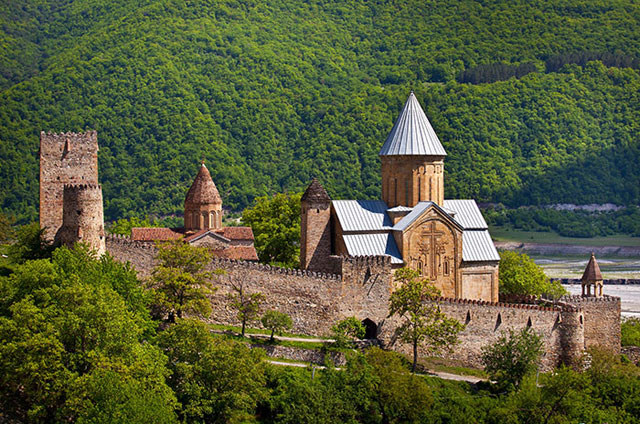
Visiting Ananuri fortress (XVI c.). Ananuri Fortress is located in the village of the same name, 70 km from Tbilisi. Ananuri served as the main stronghold of the Aragvi eristavis, the rulers of this region. The fortress was built in the gorge of the two rivers Aragvi and Vedzatkhevi in such a way that not a single army could pass unnoticed. Ananuri Fortress has played a significant role in numerous wars and has never been taken by storm in its history. Today it is one of the main tourist destinations in Georgia.
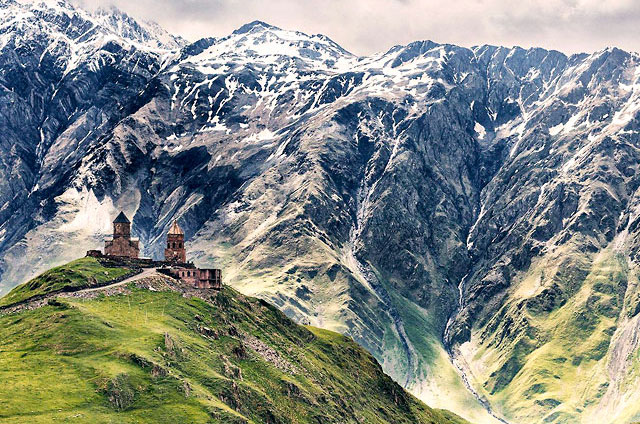
Arrival in Kazbegi (passing through the Jvari pass at an altitude of 2379 m above sea level). Ascent to the Gergeti Trinity – among all the churches of Europe located in the alpine zone, the Gergeti Trinity is located at the highest point – 2200 m. The church is located at the foot of the Mkinvartsveri peak (from Georgian: “Ice peak”). In Soviet times, the church was closed, now it has been returned to the Georgian Orthodox Church. The Church of the Holy Trinity in Gergeti is very popular among tourists – it is one of the most beautiful places in the mountains of Georgia.
Dinner (at your discretion – approximately USD 20 per person).
In the evening we return to Tbilisi.
Day 3
Jvari Monastery, Uplistsikhe, Borjomi
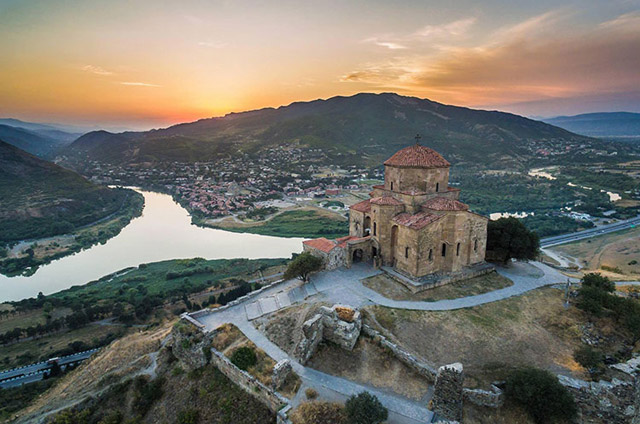
Jvari Monastery (VI century) is a rare example of an early medieval Georgian church that has survived to this day almost unchanged. It is located on the top of a mountain, from the slopes of which one can see how the jets of two rivers merge – the Kura and the Aragvi.
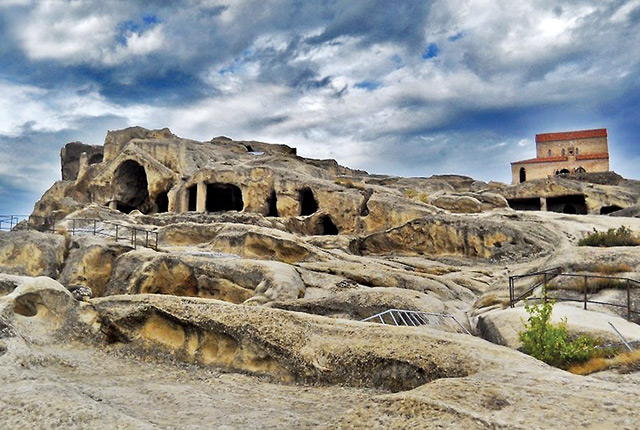
Uplistsikhe is one of the rarest monuments in the world, the oldest cave city, one of the first cities in Georgia. Uplistsikhe is carved into a rock, located 12 km east of the city of Gori, on the left bank of the Mtkvari (Kura) River. The city arose at the end of the 2nd – beginning of the 1st millennium BC. and contains various structures dating from the early Iron Age to the late Middle Ages. The uniqueness of the monument lies in the fact that, due to its structure, it has preserved the remains of architectural and religious buildings built over several millennia. During its heyday, Uplistsikhe had more than 700 caves and cave structures, of which only 150 have survived to this day.
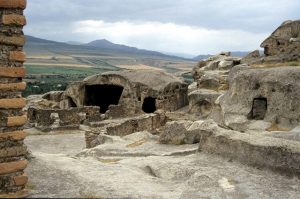
There are archaeological data on the trade relations of Uplistsikhe of this period with Urartu and Media. The settlement was called Uplistsikhe already in the ancient period. Mentions of medieval Georgian historians connect the foundation of the settlement with the mythological “Uplos, the son of Mtskhetos”. Based on this, the name “Uplistsikhe” is associated with Uplos. However, in most popular sources, a different interpretation of the name has been fixed, made on the basis of the modern Georgian language, in which “Uplos” is associated with the common noun “Lord”: Uplistsikhe – “Fortress of the Lord”.
Dinner (at your discretion – approximately USD 15-17 per person).
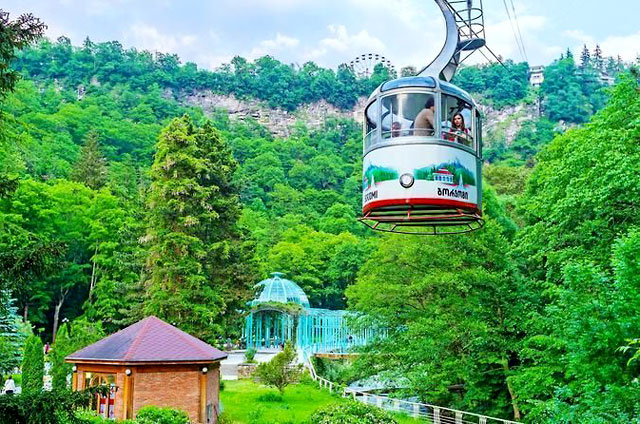
Visit to Borjomi Central Park. Borjomi – a resort town in Samtskhe-Javakheti, famous for its mineral water Borjomi. The Borjomi resort is located in the gorge of the Kura River, at an altitude of 810-850 m above sea level. Borjomi belongs to the group of low-mountain resorts and is surrounded by mountain ranges covered with coniferous and broad-leaved forests.
The climate is moderate in both summer and winter. There are over 200 historical monuments in the Borjomi Gorge: fortresses, churches, monasteries. A special place among the historical monuments is occupied by the palace of the Russian Tsars of the Romanovs, built at the end of the 19th century.
In the park there is probably the most famous place in Borjomi – a place where mineral water comes out of the spring and you can enjoy it from a source absolutely free.

Overnight in Borjomi or Akhaltsikhe.
Day 4
Rabati Castle, Mtskheta, Svetitskhoveli
Rabati Castle – a fortress in Akhaltsikhe. Originally established in the 9th century as the Lomisa Castle, it was completely rebuilt by Ottomans. Most of the surviving buildings date from the 17th and 18th centuries. According to the Georgian Chronicles the city was established in the 9th century by Guaram Mampal, son of the King of Tao. From the 13th to the end of 14th centuries it was the capital city of Samtskhe-Saatabago, ruled by the Georgian princely (mtavari) family and a ruling dynasty of the Principality of Samtskhe, the House of Jaqeli.
In 1393 the city was attacked by the armies of Tamerlane. Despite the Turko-Mongol invasions, the fortress withstood and continued to thrive. After the Treaty of Constantinople in 1590, the whole territory of Samtskhe-Saatabago came under the rule of Ottoman Empire. Turks Mostly used to build defensive edifices. In 1752 the first mosque was built in Rabati.
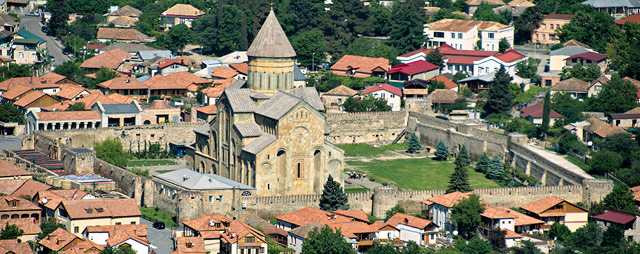
On the way back, returning to Tbilisi, you will visit the city of Mtskheta and the Svetitskhoveli Cathedral.
Svetitskhoveli – the cathedral patriarchal temple of the Georgian Orthodox Church in honor of the twelve Apostles, built in 1010-1029, on the site of the first Christian church in Georgia, erected over the grave of St. Sidonia, buried with the chiton of Jesus Christ taken out of Jerusalem. Svetitskhoveli has been the main cathedral of all Georgia for a millennium. One of the foundations of the temple was a sacred trunk (cedar), which stood on the burial site of the robe of Christ, after which the temple was named (from Georgian: sveti – pillar, tskhoveli – life-giving).
Dinner (at your discretion – approximately USD 15 per person).
In the evening we return to Tbilisi.
Day 5
Excursion to Kakheti
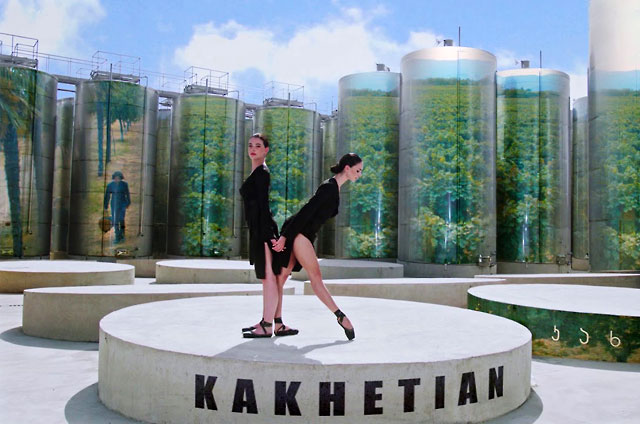
Visit to the winery KTW (Kakheti traditional winemaking), tasting several varieties of wine. On the way to Sighnaghi, stop in the village of Badiauri, where we will see how the Kakhetian “mother’s bread” (Dedas Puri) is baked; at the stop you can buy spices, churchkhela – a traditional Georgian candle-shaped candy.
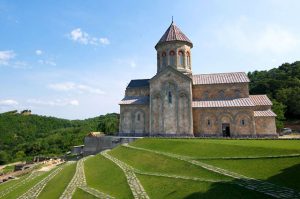
Arrival at the Bodbe Monastery – a convent of the Bodbe diocese of the Georgian Orthodox Church. The Georgian Orthodox monastery complex, originally built in the 9th century, was significantly remodeled, especially in the 17th century. Now the monastery functions as a nunnery and it is one of the major pilgrimage sites in Georgia, due to its association with St. Nino, the 4th-century female evangelist of Georgians, whose relics are shrined there.
Next we visit Sighnaghi – the city of love, located on terraces connected by winding steep streets. Although it is one of Georgia’s smallest towns, Signagi serves as a popular tourist destination due to its location at the heart of Georgia’s wine-growing regions, as well as its picturesque landscapes, pastel houses and narrow, cobblestone streets. Located on a steep hill, Signagi overlooks the vast Alazani Valley, with the Caucasus Mountains visible at a distance.
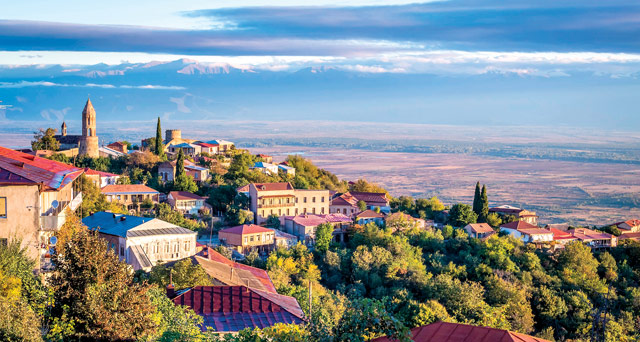
Dinner (at your discretion – approximately USD 20 per person).
In the evening we return to Tbilisi.
Day 6
Transfer to Tbilisi International Airport.
Tour price:
EXCLUDING hotel accommodation:
for 4 persons: $2720 ($680 per person)
for 6 persons: $3120 ($520 per person)
for 10 persons: $4350 ($435 per person)
with accommodation in a 4* hotel in the center of Tbilisi:
for 4 persons:: $3560 ($890 per person)
for 6 persons:: $4440 ($740 per person)
for 10 persons:: $6500 ($650 per person)
with accommodation in a 3* hotel in the center of Tbilisi:
for 4 persons: $3320 ($830 per person)
for 6 persons: $4020 ($670 per person)
for 10 persons: $5900 ($590 per person)
The price includes: hotel accommodation with breakfast in the center of Tbilisi and Borjomi (or Akhaltsikhe), private guide services throughout the tour, driver services and all transfers according to the program, ascent to the Holy Trinity Church in Gergeti, entrance tickets to Uplistsikhe and local guide services, entrance tickets to the Rabati Castle and local guide services, entrance fee to Borjomi Central Park, wine tasting.
The price will not include: airfare, travel insurance, meals (approximately $ 15-20 per person).



